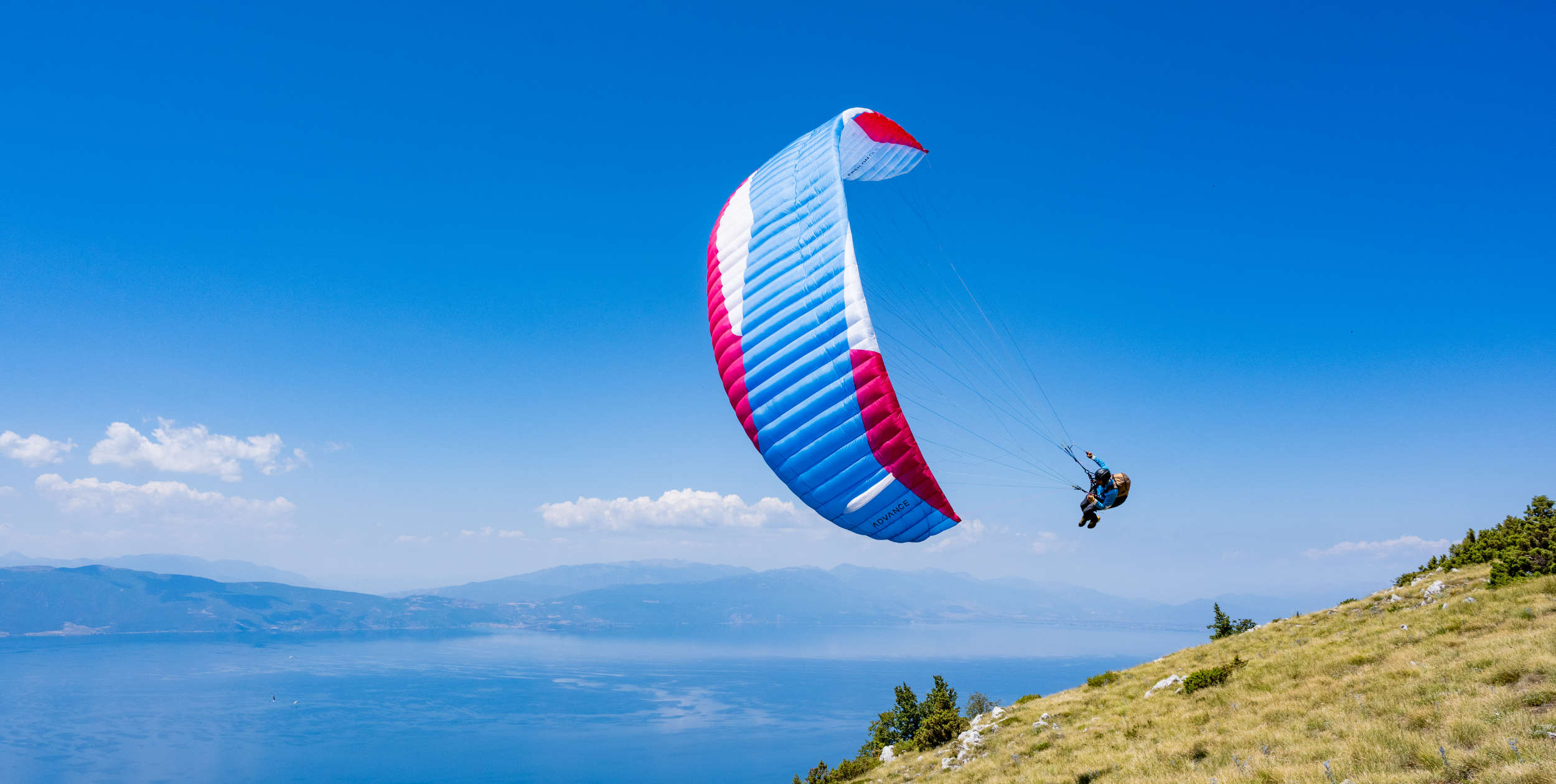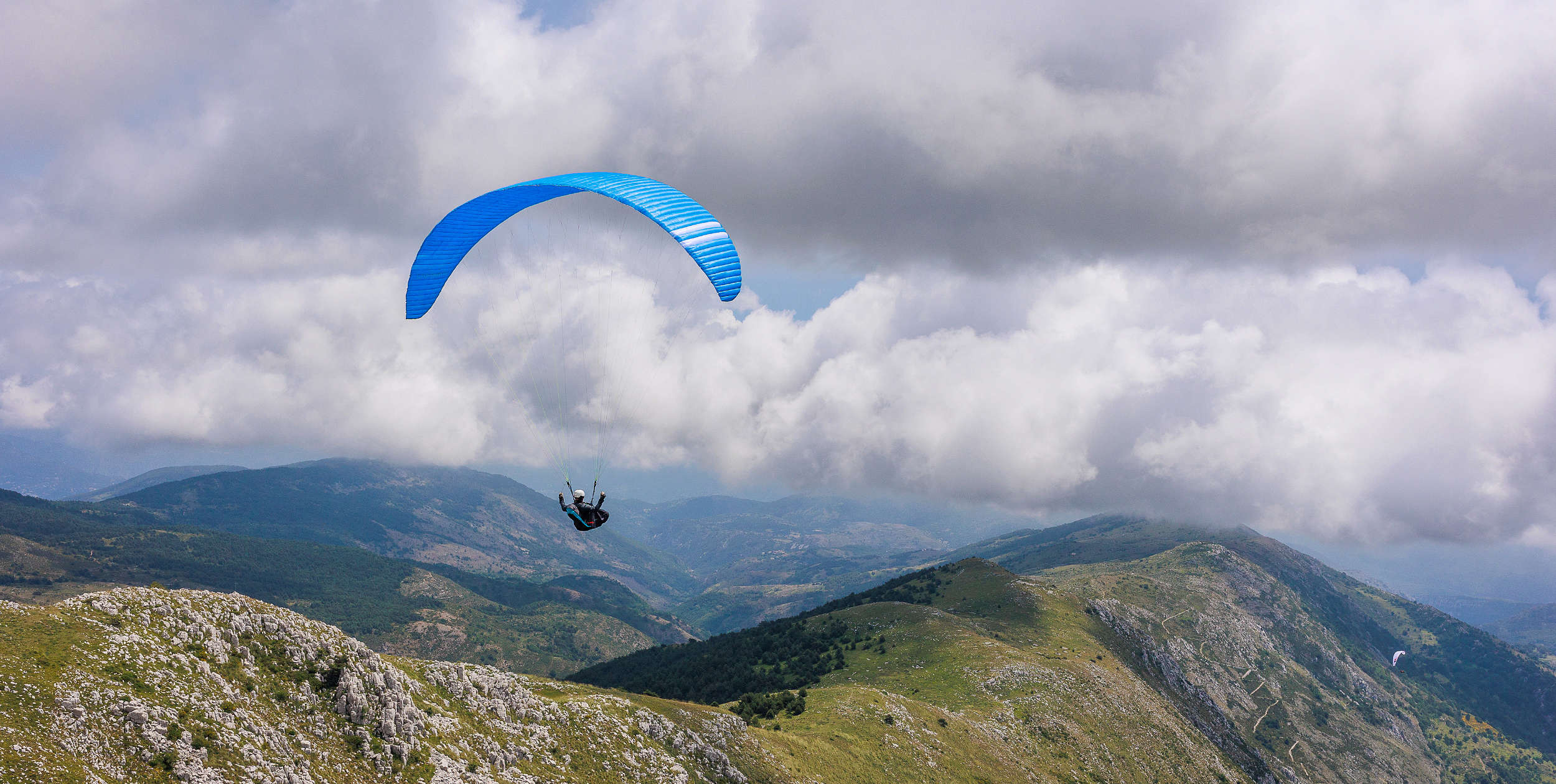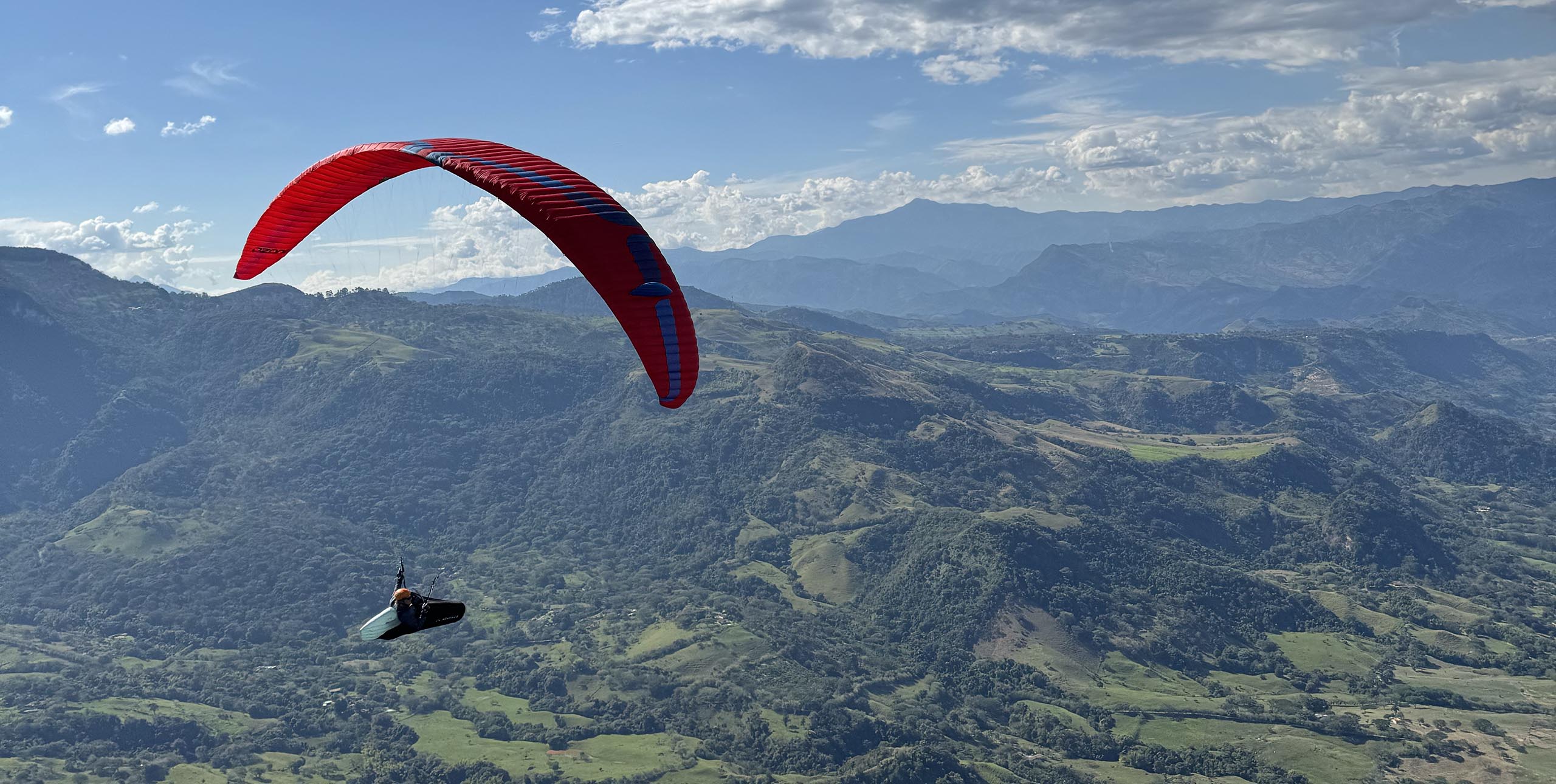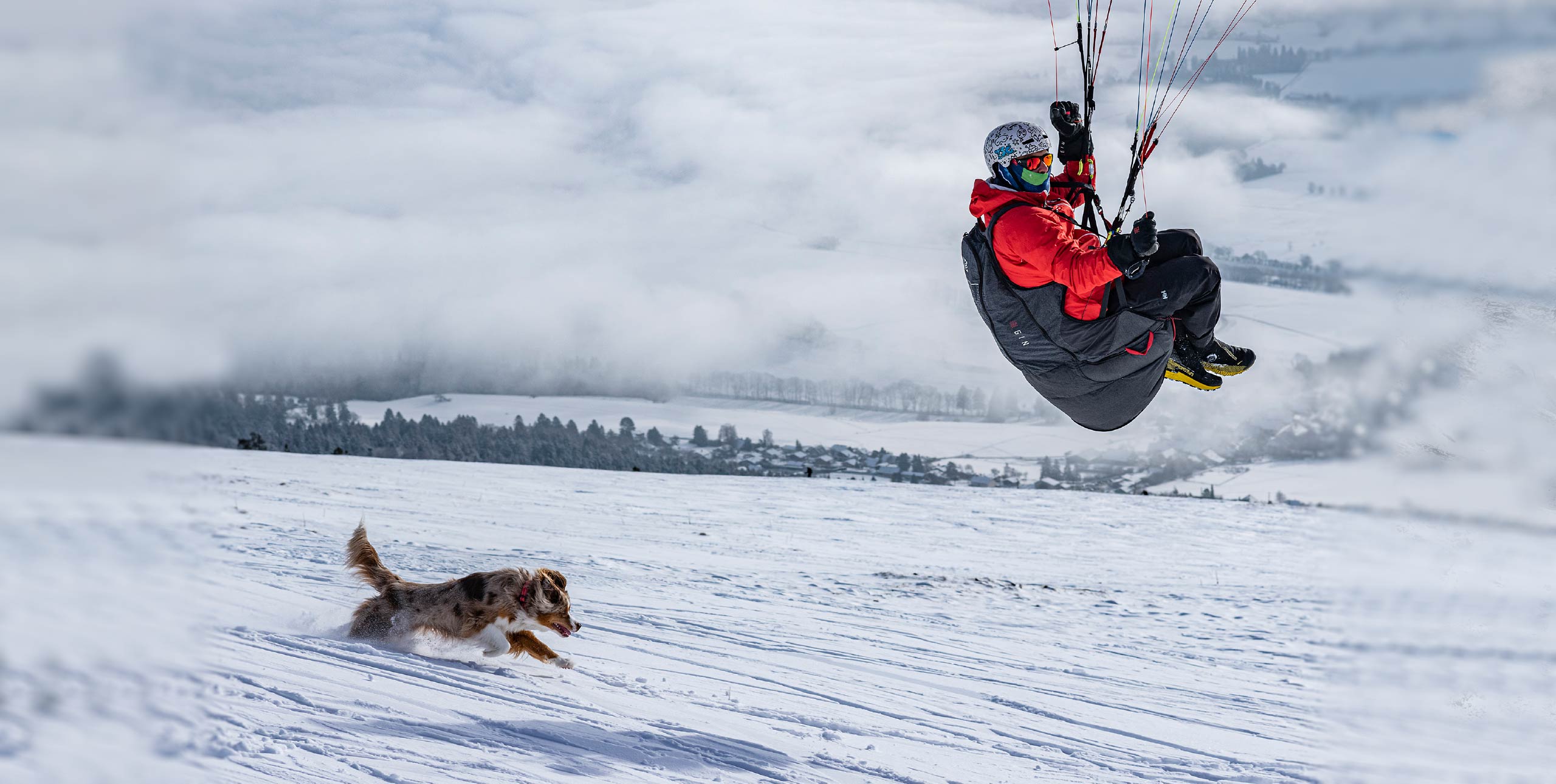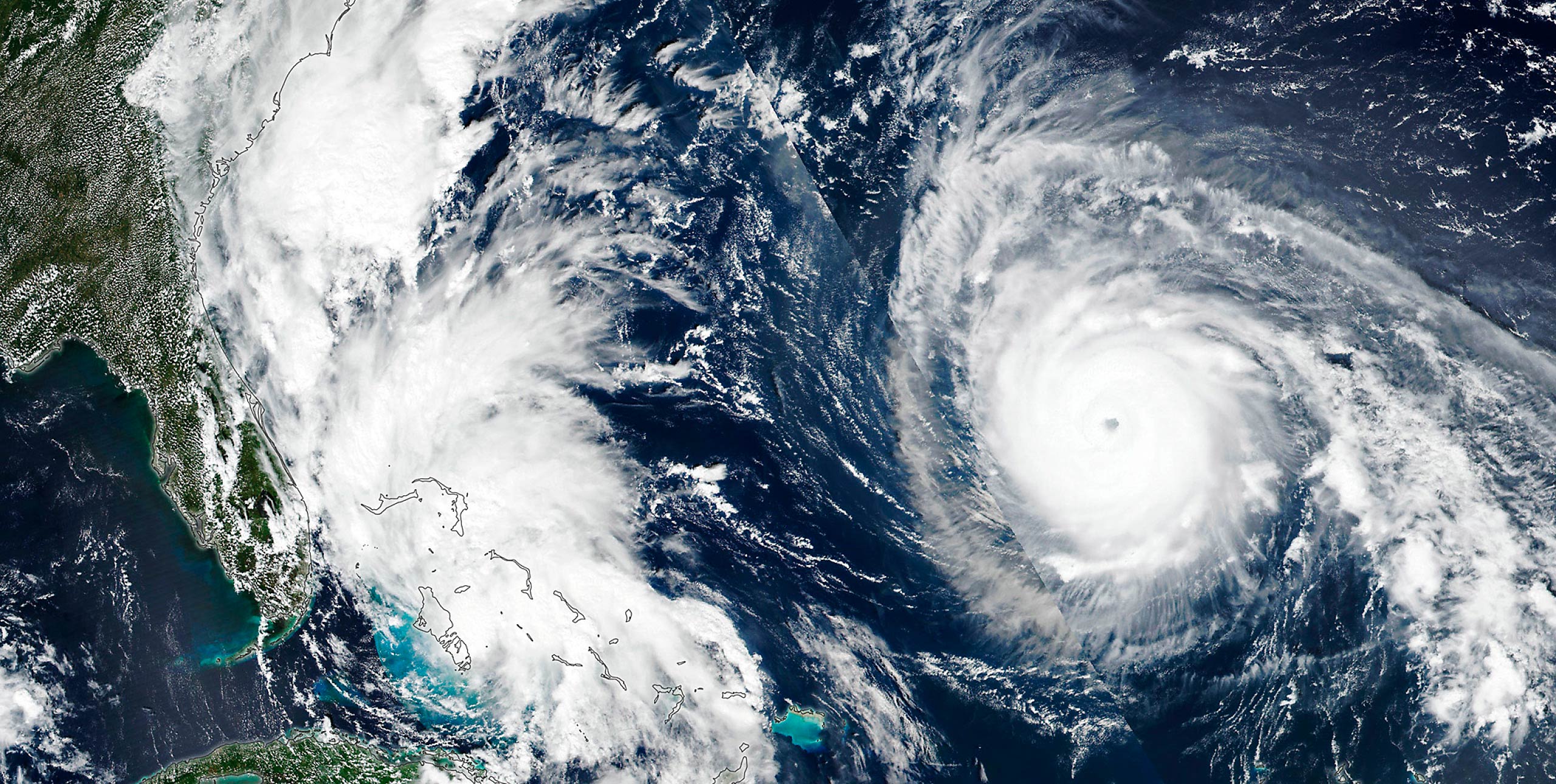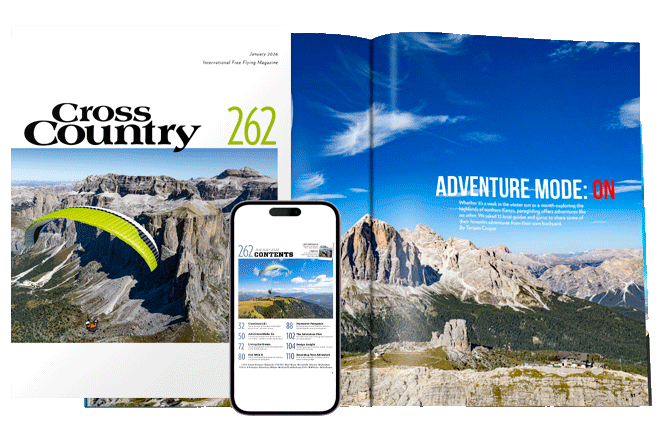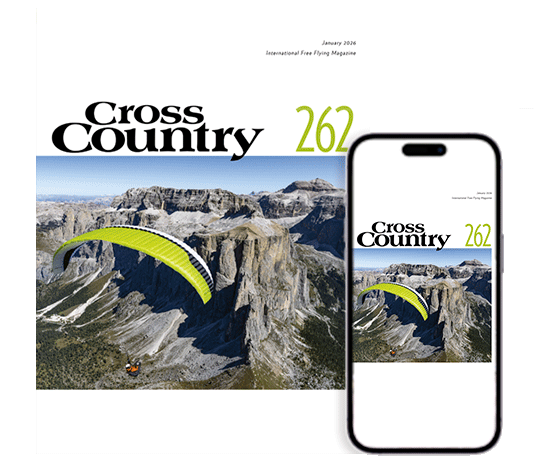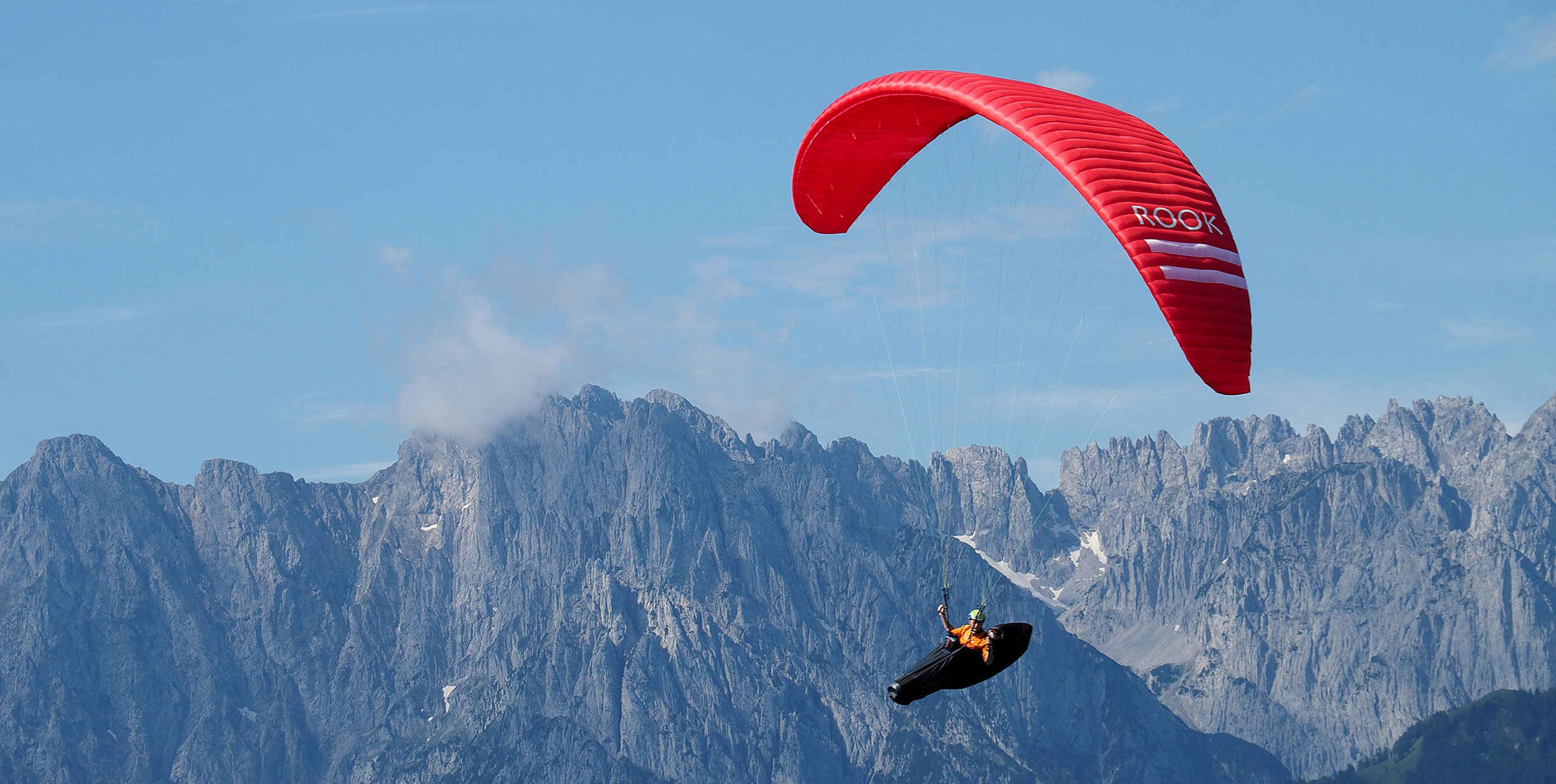
Triple Seven’s latest high EN-B hits the bullseye, says Bastienne Wentzel
Ten-second review
I think it was love at first flight. I flew the Rook 3 at the Stubai Cup back in March and found myself so quickly at the top of the gaggle that I looked around in surprise. This usually didn’t happen to me. So I was thrilled to be able to fly the Rook 3 for two summer weeks in the Alps and it didn’t disappoint.
Background
The Rook is Triple Seven’s high-B glider. There are seven wings in Triple Seven’s full range, from the EN-A Deck Evo to the CCC Gambit, and this is their fourth wing – above the Knight (also EN B) and below the Queen 2 (their only EN C).
The original Rook was released in 2012, the Rook 2 in 2015/16 and now comes the Rook 3. As of July, only the MS and S were certified, but the others are in progress. In an online review at the end of May Ziad Bassil called the Rook 3, “The best, most performant, pleasurable to fly, high-end EN-B glider I have ever tested.” That’s high praise indeed, so I was keen to fly it for myself.
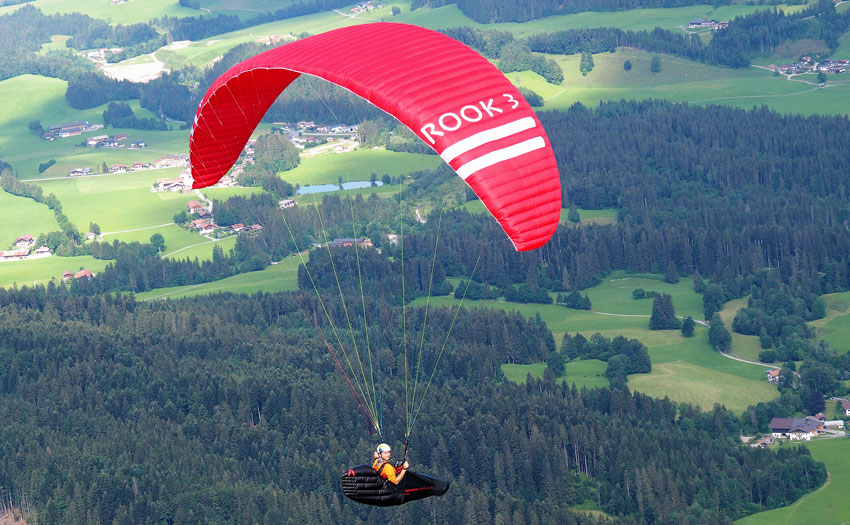
First impressions
The first thing that catches the eye upon unpacking is the aggressive sharknose (Triple Seven call it Back Positioned Intake) and the tiny cells. In fact, they are smaller than those of a very recent EN-C we compared it with.
The second thing is the design: Triple Seven have decided that seams in the canopy should only be there for performance, never to create an intricate colour pattern. So apart from two racy stripes the wing is one color. This results in a very clean surface from the tight leading edge with short rods, to the trailing edge with mini-ribs and cleanly threaded brake attachments.
It’s a quality wing, from the soft brake handles to the Harken pulleys and the sturdy Dominico N30/N20 DMF canopy.
The main A and B-lines are sheathed, the rest including the main C-lines and all top lines are unsheathed Edelrid A-8000-U. It’s a hybrid three-liner with a fourth top row on some cells. They managed to keep the weight in check: the MS size (80-95kg TOW) weighs 4.8kg. A light version is expected by the end of the year.
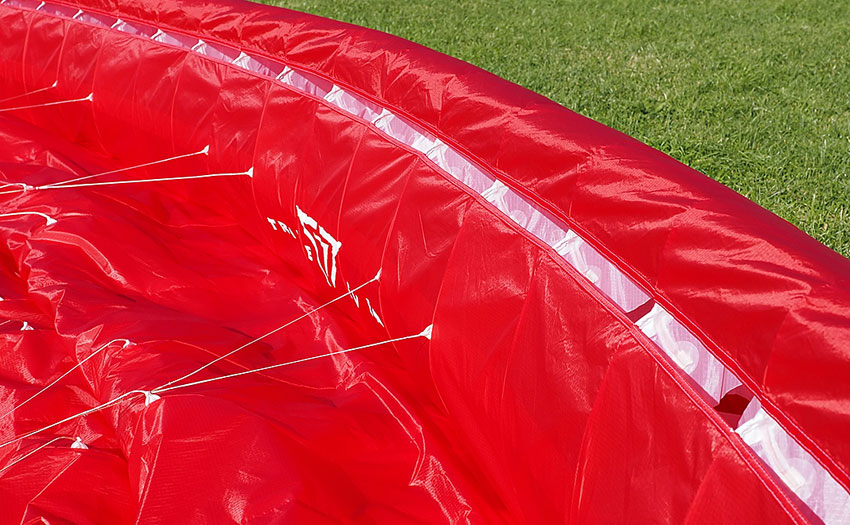
First flights
On my third day with the Rook 3, I flew a personal best. To me, that means the instant comfort I felt on the Rook 3 actually pays off while going cross-country.
The thermals were still light when I took off, but the Rook 3 practically finds them on its own. In light air, it’s like a puppy (well, a big pup actually) pulling you towards the thermals. On many occasions, I actually noticed that the wing was already turning towards the thermal while the vario still needed to get on with its first beeps, without me doing anything.
In these conditions, I felt a tightening of the brake line first, very soon followed by a pull on the riser. Then the wing started to turn in that direction without hanging back or pitching forward. I quickly learned to recognise these signs, which improved my thermalling again.
The brake pressure is medium but fairly direct at this loading. The glider is nicely sensitive to weightshift. Triple Seven recommend loading the glider near the top of the weight range, but flying it right in the middle I didn’t feel the wing was too big.
Cloudbase wasn’t incredibly high, so I crossed the valley half expecting not to make it. But the glide on bar was great, and flying with others later, the latest EN-Bs as well as many EN-Cs, I consistently found that the Rook 3 doesn’t lose much height and usually glides the same or better than the others. Its top speed is probably a tad less than the fastest Cs, but gaining about 10km/h (maybe a bit more with higher loading) is fine, certainly when the glide is good.
The B/C system for steering on bar looks complicated: it’s a series of pulleys and rings connected with a thin string, with the purpose of pulling the B- and C-risers down simultaneously without too much force. In practice, the system works fine. There is no issue with it on launch. The slightly padded part of the C-riser is easy to grab while on bar and fairly intuitive to pull. The lighter forces allow quite a bit of steering while on bar, for turns but also for catching dives in turbulence. The canopy hardly deforms, which benefits performance.
So I easily made it to the next thermal on the other side and the Rook 3 was already happily turning on its own before I knew it. We climbed to cloudbase again and off we went.

Thermalling and XC
It’s notoriously difficult to compare performance while you’re thermalling with others, but the Rook 3 seems to thermal very efficiently in the light stuff. I found it best to let it do its thing: it always seemed to get up faster than the majority of the wings around us without too many corrections (or even when I was taking videos or photos while thermalling). It doesn’t feel like it turns particularly flat, but banking it up is efficient even in light thermals.
When things got rougher, big clouds sucking and wind blowing the thermals apart, I felt the Rook needed some more management. There is no needless chatter, but it started to roll a bit. The wingtips are lifted quite strongly and while the Rook 3 still seemed to turn towards the lift, I felt the need to calm the rolling movement once in a while. Triple Seven recommend flying the Rook 3 with a seatplate harness, and better control of the roll might be one of the reasons for that. The Rook 3 is very yaw and pitch stable, it rarely hangs back, or pitches so far forward that there is a need to catch it.
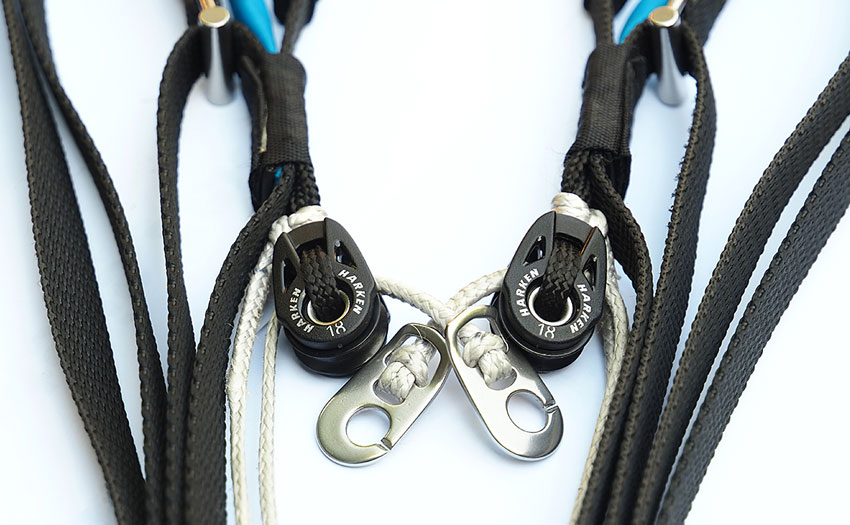
Not for rookies
“So, what’s the catch?” asked one pilot. Good question. I feel that the Rook 3 sits at the very top of the EN-B class. It performs way better than most EN-Bs I flew with and it can easily keep up with a number of EN-Cs. The pay-off is that demands on the pilot are correspondingly high.
Launch behaviour of the Rook 3 is fine, but it doesn’t exactly launch itself. It needs a bit of time to fill in light winds and pulls a bit in stronger winds, but it stays on track and doesn’t shoot too much.
While they happen rarely, the one 30% collapse that happened during the review period resulted in a nasty cravat that needed management, both in keeping a straight course and getting it out. Deliberate collapses posed no problems and opened fairly quickly without changing course.
Big ears in still air are stable, but after many attempts I conclude that pulling big ears in turbulent air rarely results in stable flight. Most of the time, the open section of the wing starts an accordion movement that accelerates and lets the wing roll from side to side, making it difficult to counter on weightshift. Pushing 25-50% bar results in stable flight, but this is something the pilot needs to be comfortable with.
The other main quick descent method, a spiral dive, leads to considerably higher G-forces than any other EN-B I know. In fact, I wasn’t able to pull a deep spiral, let alone a nose-down spiral, without starting to grey out. Another pilot pulled a SAT with it and strained his neck at the violent entry (which goes through a nose-down spiral). Wingovers are great fun, but this is definitely not a freestyle glider.
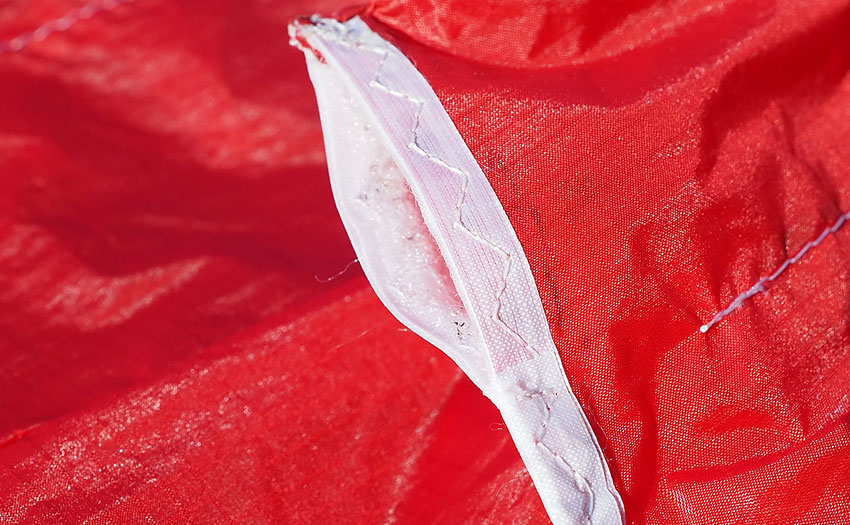
The verdict
On their website, Triple Seven say: “We’re often told that ‘it isn’t the wing, it’s the pilot’. And while it is true that no wing will make a bad pilot great, it’s also true that an extraordinary wing WILL seriously improve your flying!” I can only agree that the Rook 3 is that wing, provided you possess the necessary skills and currency.
A pilot flying the Rook 3 needs to be aware of and comfortable with its characteristics. Triple Seven is honest about this. They say: “You’ll get the most joy out of a wing in this class by being current, with probably 50+ hours in active air each year, and with some XC skills to your name,” and go on to say that you need to be familiar with, or have a desire to improve upon, quick descent methods.
I would say if you are skilled enough to fly an EN-C, but you’re not prepared to put in the extra workload, this is the wing for you. Who needs an EN-C when you can have the Rook 3?
Bastienne Wentzel flew the Triple Seven Rook 3 MS with a regular harness with seatboard at an all-up weight of 88-89kg.
Published in issue 213 (September 2020)
Bastienne Wentzel flew the Triple Seven Rook 3 MS with a regular harness with seatboard at an all-up weight of 88-89kg


